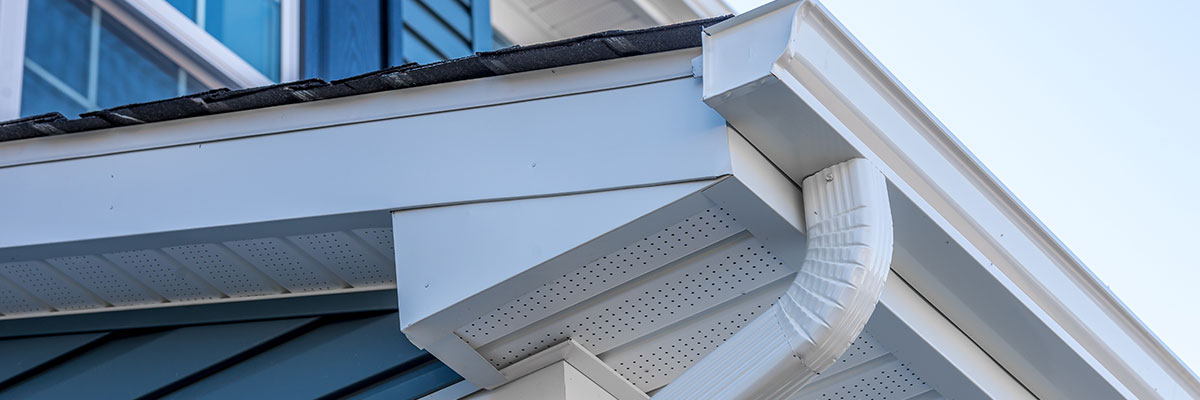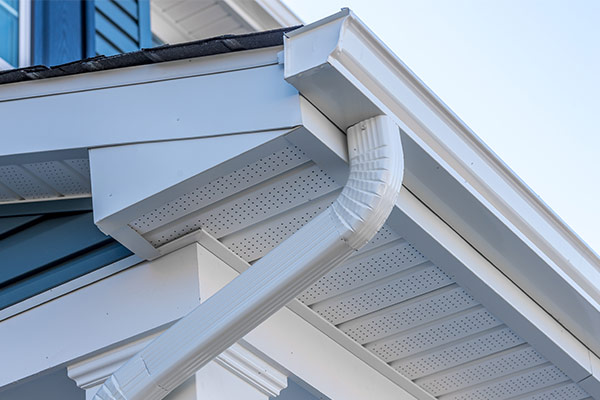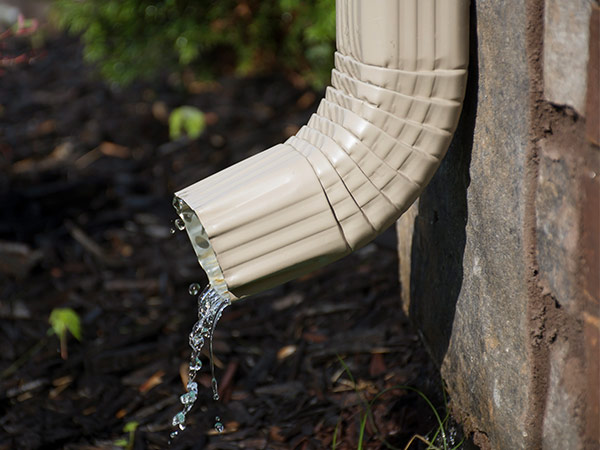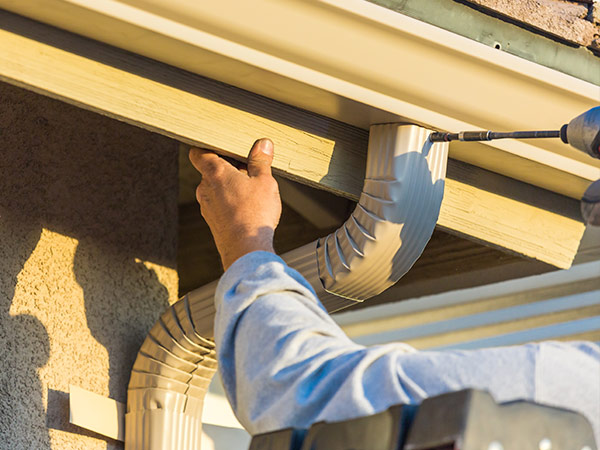

It’s Raining. It’s Pouring. Are You Installing Gutters?
April showers bring May flowers and the need for well-functioning gutters. If you are an advanced DIYer, or you simply need some direction in selecting which gutter system to have a professional install, we have all the information and supplies you need. Let’s look closer at the different types, materials, and shapes of gutters. Plus, how to install them on your home from measuring and cutting to hanging them just right.
What Are Gutters and Why Do You Need Them?
While gutters can add a nice curb appeal to your home, their primary purpose is to protect it from the damaging effects of water. When rain falls on your roof, it pours into the gutter system attached to your roof, and then it runs through a downspout and is directed away from your home or is collected in a rain barrel (more on that later). Without gutters to redirect the water where you’d like it to go, water can wreak havoc on your home in the form of mold and mildew, rotting fascia and trim, soil erosion, and even damage to your home’s foundation.

What Are the Different Types of Gutters?

There are many types of gutters to choose from for your home.
- Seamed are sold in 10-foot pieces, so you can link them together to fit your roof using connectors which must be sealed at the “seams.” You do have to re-seal the seams every few years, so they won’t leak.
- Seamless are cut by a professional to fit your roof length without seams.
- K-style is popular and has an ornate shape similar to crown molding.
- Box-style is square-shaped and is often embedded in the roof itself.
- Custom fascia are custom and made of smooth aluminum which hides the edges of the rafter tails from view. This style can transport larger amounts of water and are more expensive.
- Half-round or European is open and faces the roof. This style was popular before the 1960s, so it is common on older homes. However, this style easily gets clogged with debris, so adding a gutter guard is a good idea with this style.
What Are the Different Materials for Gutters?
- Vinyl is inexpensive and available in many colors. It lasts for about 10 years.
- Aluminum is inexpensive and available in many colors. It lasts for 20 years because it resists corrosion. It is a popular option for sure!
- Galvanized Steel is more expensive and durable as it can last for 20 years, yet it is prone to rusting.
- Zinc is more expensive yet durable and does not rust or fade in color. It lasts for 50 years or more.
- Copper is the most expensive metal and is an attractive material that many homeowners like. The color will change to a greenish patina. It lasts for 50 years.

What Are the Main Components of Gutters

- Gutters are 10-foot horizontal trays (unless custom cut) that are attached to the roof of a home and catch water running off the roof.
- End Caps are placed at a stopping point of a gutter system, causing water to flow into the downspouts.
- Elbows connect longer gutter pieces around any angles, corners, or curves of the roof - vertically or horizontally.
- Downspouts are vertical pieces of enclosed gutter attached to the roof gutters which run downward directing water into a splash block.
- Splash Blocks catch water from the downspout and redirect water away from your home.
- Conductor Heads catch larger volumes of water and direct it into the downspouts. This protects against overflow at the roofline while also adding a decorative touch.
- Gutter Guards protect gutters from filling with debris. There are many options for guards such as filters, foam, and covers. If you don’t currently have gutter guards, we do have a blower kit to keep your gutters cleaned out, or to clean out your gutters before you install guards.
- Rain Barrels collect the rainwater for use around the home or yard. This promotes a healthy yard and garden while saving you money on your water bill too.
What Tools Are Used to Install Gutters?
- Tape measure
- Ladder
- Sealant
- Drill or Rivet gun
- Hacksaw or Angle grinder to cut pieces to the correct length and angle
How to Install Gutters on Your Home
Installing gutters is definitely a feasible task if you understand how to work safely on a ladder, and you have multiple people working on the project. Hire an experienced installer if you have a second story. This is for your own safety! Falls from ladders are the most common injury for DIYers, so be careful!
![]()
![]() Before you get started, check your neighborhood's HOA regulations.
Before you get started, check your neighborhood's HOA regulations.
- Measure the length of your roofline and cut the gutter pieces to fit using a hacksaw or angle grinder.
- Hammer a nail into the fascia board (for measuring) at the right edge low enough to allow for water to run off the roof line into the gutter. Then hammer another nail to mark the left edge lower to create a “gutter slope,” so water will flow to the downspouts. The rule of thumb for the slope is a vertical 1/2 inch for every 10 feet of horizontal run. Tie a chalk line to the nail. Run the chalk line to the nail on the far left edge and snap it to mark exactly where to hang the gutter.
- Before hanging the gutters, attach the end caps to the gutter at each end using a sealant.
- Cut the downspout location in the gutter. Attach the conductor head using sealant and screws.
- Attach the gutter to the fascia using the brackets and a power drill to screw them in at the rafters.
- Measure the length of the downspout and cut the spout piece. Account for a rain barrel or splash block.
- Attach the elbows and the downspout to the gutters. Use the appropriate fasteners to attach the downspout to your home’s particular substrate. For example, use masonry fasteners if you have brick siding and use vinyl fasteners if you have vinyl siding.
Pro Tip: It’s a good idea to ensure that your gutters are working properly when it rains. You can easily check that no water is flowing over the sides of your gutters and that all water is flowing properly away from your home. You should also check and clean out your gutters twice yearly to extend the life of your gutters. Signs of a problem include any cracking of the gutters or pulling away from the roof.
Water can be very destructive to your home, so don’t underestimate the importance of high-quality gutters. It’s the perfect time to plan a gutter project, so you can enjoy all the much-needed rain knowing your home is safe and secure with a brand-new gutter system. We have all you need at McCoy’s to plan and execute your project!

